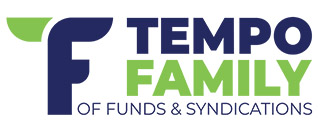The real estate investment environment in 2025 is defined by a mix of cyclical recovery, shifting market dynamics, technological transformation, and evolving demographic trends. After several years of post-pandemic disruption and high interest rates, the sector is experiencing renewed momentum, though investors must navigate a complex set of factors influencing returns and risk profiles (especially passive real estate investing considerations for accredited investors).
Let us start by listing some of the major investment categories available for investment today (all key components of diversified real estate portfolios and private real estate funds):
- Private credit – 1st lien debt
- Private credit – Mezz debt, “recovery capital”
- Preferred Equity – “recovery capital” and “deep value buy”
- Common Equity – “deep value buy”
- Preferred & Common Equity – ground-up construction or redevelopment
Private credit – 1st lien debt is very popular today in light of many banks tightening their lending requirements. Private lenders stepped in offering loans where banks stepped out. For investors, what is really important is to select a good diversified fund that is run by very experienced managers (real estate debt and equity investments should always be vetted). Typical offerings might include:
- 90 days “liquidity option” with annual yields 8-9% range
- Main offering option with annual yields 9-12% range
Note: “liquidity option” typically comes from the fund having a line of credit with a bank where the fund can pledge its assets and borrow to a certain maximum leverage to be able to manage redemption requests. Understanding what backs the “liquidity option” is an important consideration for those who need confidence in the liquidity being available when they need it.
Private credit – Mezz debt, “recovery capital” is an opportunistic investment strategy. It is all about careful selection of “cash poor, equity rich” fundamentally solid assets that are struggling with liquidity pressures driven by “higher for longer” interest rates. Most of these Mezz Debt loans are designed for 2-3 years’ time frame. Normally, Mezz debt comes in right behind primary debt and ahead of all existing Preferred and Common Equity.
Typically, these investments offer high yield, e.g. 16-18% target at a well-understood and mitigated risk. Underwriting of these investments requires clarity on the situation with the primary lender, their requirements for the owners to raise additional capital to create interest reserves for the bank, have fresh sufficient capital to complete the business plan and have a clear path to a capital event such as refinancing upon stabilization of the property with long-term fixed-rate debt at lower interest rates or a sale event.
Preferred Equity – “recovery capital” and “deep value buy” has a lot of similarity to the Mezz Debt strategy.
First of all, let’s compare Mezz Debt vs. Preferred Equity on the high level.
Mezz Debt:
- Defined maturity or term, e.g. 2-3 years
- Defined interest rate with some current pay and some deferred pay, e.g. 20% interest rate with 12% current pay and 8% deferred pay
- It could have an “equity kicker” or additional compensation if the project does well
- It could have “Personal Guarantee” from the borrower(s)
- It could have additional collateral besides primary collateral
- It has no UBIT (Unrelated Business Income Tax) for IRA investors
Preferred Equity:
- It is typically more patient money than Mezz debt with longer time horizon to repayment, e.g. 3-5 years
- It usually has a well-defined “Preferred annual return,” e.g. 12% plus it has an upside in the project, sizable equity kicker such as 25% of upside while Common Equity could have 75% of the upside
- It could have some tax benefits, e.g. depreciation to offset cashflows
- It could have major decisions or other co-control provisions of the project
- It typically has seniority of cashflow distributions and the return of capital over Common Equity
As far as the strategy use “recovery capital” vs. “deep value buy,” let us dive a bit more into those two opportunities comparison. Both strategies must be very selective to find sponsors and deals that offer good downside protection and, at the same time, significant upside.
Preferred Equity – Recovery Capital
- Preferred Equity position must look at the real value of the Common Equity behind it based on today’s market value.
- There must be a clear business plan how to get the project to a capital event (refi or sale) within 2-3 years.
- Uses of the capital typically include bank interest reserves, CapEx to finish the renovations and complete the lease-up, and create capital buffer for the project to get to positive cashflow.
Preferred Equity – Deep Value Buy
- These deals by definition must be bought at a steep discount to the peak of the market, e.g. 30-40% discount. Furthermore, underpriced or undervalued based on many traditional metrics such as: Cap Rate spread over the interest rate (1.5%+ positive spread), purchase price per Sq Ft deeply discounted vs. reconstruction cost (e.g. 50% discount), predictability of cashflow based on tenant mix, existing leases, market rents, and other KPIs.
- Preferred Equity typically does 50-60% of the total fresh capital, and Common Equity covers the remaining 40-50% of needed equity capital. Preferred Equity gets seniority of cashflows and return of capital, adding significant additional safety to a deeply discounted acquisition price.
- Return vs. Risk profile should be very healthy because of the “deep value buy” combined with the capital stack position ahead of the Common Equity. Similar to Mezz Debt, Preferred Equity return target could be easily in the mid-high teens or even higher.
Common Equity – Deep Value Buy
- This strategy seeks to find very motivated sellers driven by financial pressures, life events, or other circumstances. Overall market conditions are such that most buyers today are deep bargain hunters and overall Cap Rates/valuations have reset driven by “higher for longer” interest rates. Discounts typically range from 20-40%+ of the peak of the market. Most acquisitions could be both strong cashflow from the start projects and have significant growth upside via the market recovery and value-add plan (ideal for investors seeking predictable cash flow and long-term appreciation).
- Downside protection on many of these projects comes from “buying deep,” conservative debt leverage, and clear and simple value-add plan.
- Common Equity takes on more risk than Preferred Equity, but it is a well-understood risk and the upside potential must be very strong, creating what is known as the “Asymmetric Reward vs. Risk” investment opportunity. Common Equity has effectively unlimited upside in these types of deals while downside risk is minimized.
- Common Equity typically receives the bulk of tax benefits, e.g. depreciation.
- Target return profiles in Common Equity typically start in the very high teens, e.g. 18-20%+ IRR (Internal Rate of Return) and often can be easily in the mid-20s and even higher (an attractive metric for private real estate investment funds).
Preferred & Common Equity – Ground-Up Construction or Redevelopment
- This strategy today looks highly speculative given current high-interest-rate environment. Multiple markets are still struggling with oversupply, and new developments are difficult to justify, especially with the higher construction costs driven by inflation and higher cost of interest on debt.
- Transaction volume has fallen off the cliff for these new development starts given higher level of risk associated with these types of projects and uncertainty of the future rents and valuations.
- There are some good projects that can still make good sense in theory. However, it is difficult to get a discount on construction, development, or redevelopment. The costs are what they are. In comparison, “deep value buy” deals can look a lot more attractive because they can actually offer a significant discount to the reconstruction cost, even adjusted for the condition and the age of the asset.
- Clear exceptions could be data centers for AI-intensive computing with guaranteed tenant leases upon completion. These types of projects remove the “speculative” element through pre-signed leases ahead of construction.
Next, let us briefly discuss sector-specific opportunities (all of which play into commercial real estate investment strategies):
Office: After a challenging period, the office sector is gradually entering an up-cycle, especially for prime, modern spaces.
Retail: Retail real estate is seeing strong demand and the lowest vacancy rates among commercial sectors. Institutional capital is returning, with a focus on service-based and experiential retail less vulnerable to disruption related to tariffs ***see example below of HQ at Seaport.
Industrial: The sector continues to benefit from e-commerce, though leasing activity is stabilizing. Demand is shifting toward newer, higher-quality properties, with older assets facing higher vacancies.
Multifamily: High homeownership costs are driving robust demand for apartments, with vacancy rates expected to edge down as household formation accelerates. Overall valuations have reset, and the sector appears to be much more attractive today than a couple of years ago.
Data Centers: Explosive growth in artificial intelligence, cloud computing, and digital infrastructure is fueling demand for data centers.
In conclusion, current landscape of RE opportunities is much more attractive than a few years ago. “Higher for longer” interest rates have shifted opportunities from the peak-of-the-market speculative development opportunities and riskier heavy value-add projects to much more defensive private credit (1st lien and Mezz debt) investments as well as opportunistic Preferred and Common Equity on “deep value buy” deals. Risk vs. Reward profile has significantly improved for investors with better downside protection and, at the same time, stronger upside opportunities. As interest rates settle at a “higher for longer” level, yields on debt investments have gone up, and the returns on new equity investments have also increased through deeper buys on new deals or stronger yields on the “recovery” capital investments.
For example, HQ at Seaport demonstrates a “deep value buy” opportunity in the open-air retail sector in downtown San Diego with a great mix of strong food concepts (service-oriented experiential tenants). The property is being acquired at a phenomenal 9.25% CAP rate with great downside protection of fixed-rate debt at 6.5% and very conservative mortgage LTV of only 57%, and significant upside of only 84% occupancy with great lease-up potential of the remaining 16%. The property is located in a very limited-supply area with almost full occupancy at the neighboring Seaport Village, close proximity to the Convention Center, multiple hotels, the USS Midway aircraft carrier museum, cruise terminal, and other venues in the downtown area. The property has a very motivated seller and, as a result, the buyer is getting a well-undervalued asset with strong upside and well-protected downside.

